The Unique World of Francisco Salamone – Part One
The first part of this year’s World Congress on Art Deco was devoted to the works of obscure Argentinian architect Francisco Salamone.
How obscure? Do an Internet search and Salamone is pretty well documented. But ask people in Argentina, and chances are the name won’t ring any bells.
Nonetheless, a small(?) group of Salamone fans exists, worldwide. For our trip, we took the name Salamoniacs: Individuals who travel the Argentine countryside seeking the city halls, cemeteries and mataderos (slaughterhouses) Salamone executed with reinforced concrete and modernistic vision.
Born in Sicily, Francisco Salamone (1897-1959) migrated to Argentina where he became a close friend of Dr. Manuel Fresco, the Governor of Buenos Aires province from 1936-40. Salamone was in the right place at the right time. The Pampas, the Argentine countryside, was undergoing large-scale modernzation to its infrastructure, and Salamone completed over 60 municipal buildings in just four years. Since Argentina is the second largest country in South America, we wondered how this was possible, and it turns out Salamone was a pilot. Nonetheless, averaging 15 large projects per year, right down to furniture and lighting is pretty impressive, no?
And these were not ordinary municipal buildings, as we shall see.
The Balcarce site would be striking anywhere but what these photos don’t show is the odd juxtaposition between the massive cemetery portal and the sparsely populated surrounding area.
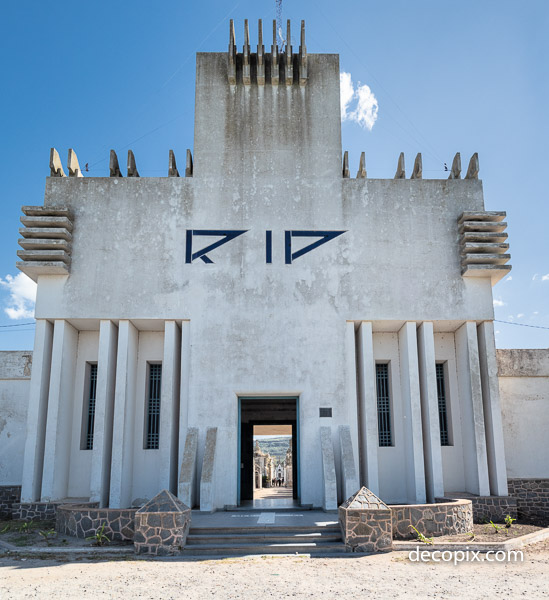
Cemetery, Balcarce, Argentina
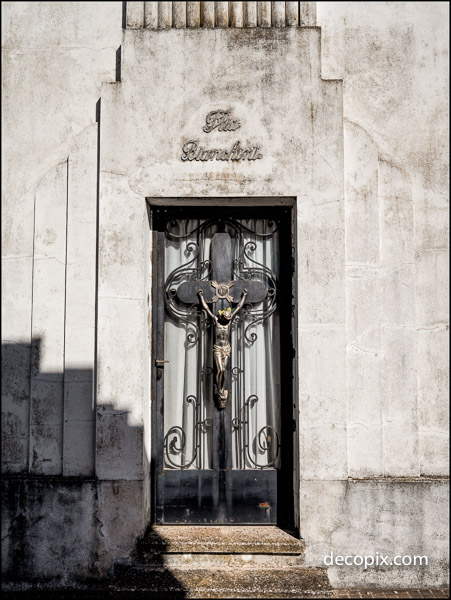
Mausoleum, Balcarce cemetery
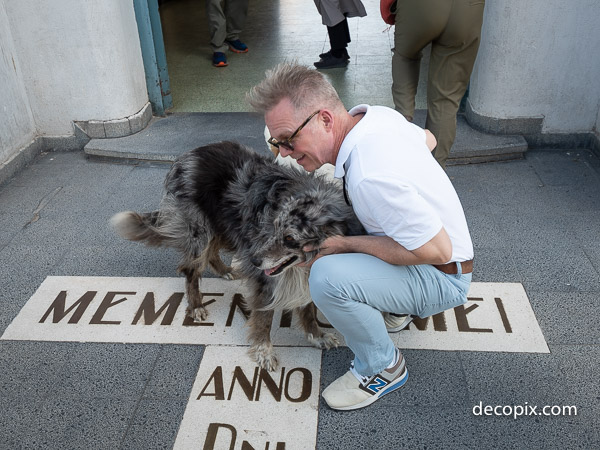
Rory makes a new friend with one of Argentina’s incredibly friendly dogs.
Balcarce is also home to the only school Salamone built, and here we ran into something unexpected. Unlike Mar del Plata, Balcarce isn’t normally a tourist attraction. It seemed the whole town turned out to greet us. There were local VIPs, a TV reporter, students in vintage clothing and a performance by the school band. After such a show of friendship and hospitality. I hope we didn’t raise expectations too much for successive waves of Salamone tourists.
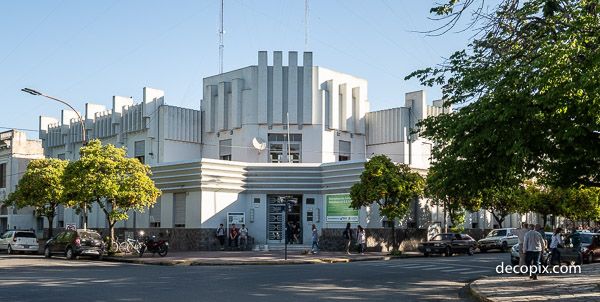
School, Balcarce, Argentina
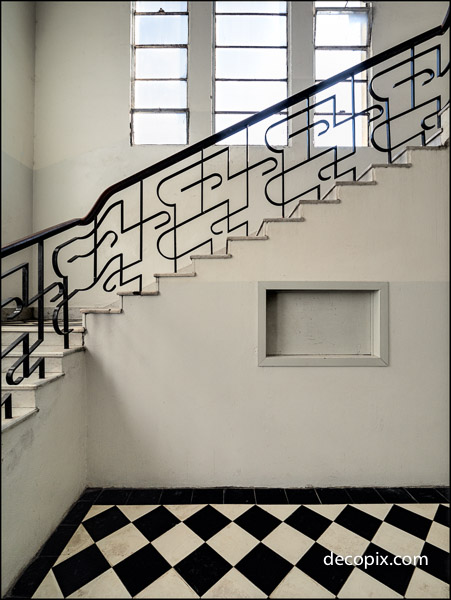
Lobby, Balcarce School
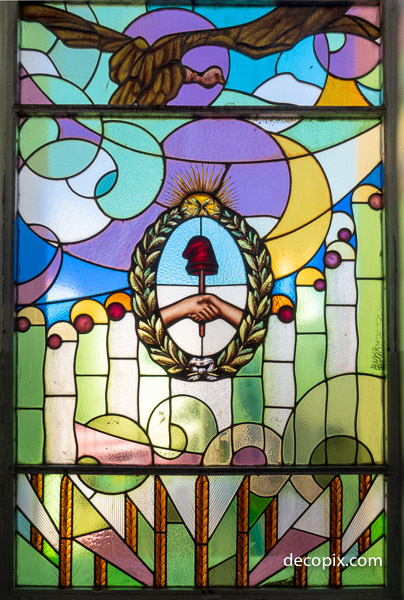
Stained glass window, Balcarce School
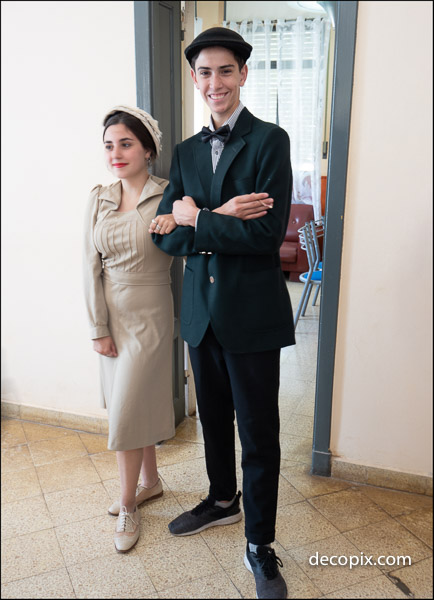
Balcarce students in vintage attire
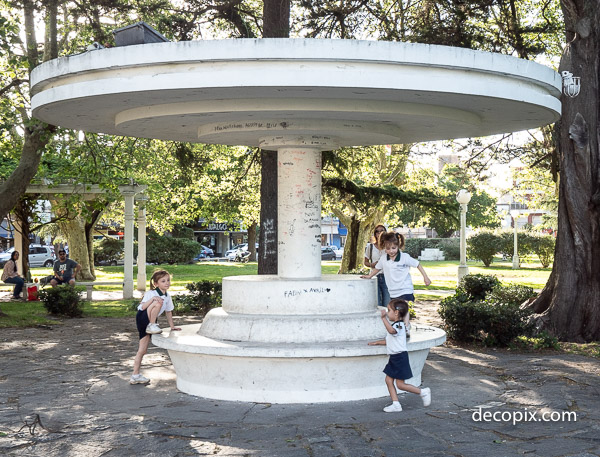
A team of experts tests Salamone’s reinforced concrete construction.
Then on to an asado at the Balcarce matadero. A meal at the slaughterhouse might seem odd, but none of Salamone’s mataderos currently serve their original purpose. Why? For one thing, they lacked refrigeration. And when the time came to modernize, new facilities were built, leaving Salamone’s mataderos to decay. Some Salamone mataderos have been repurposed, but most have not. It would be wise to see them while you can.
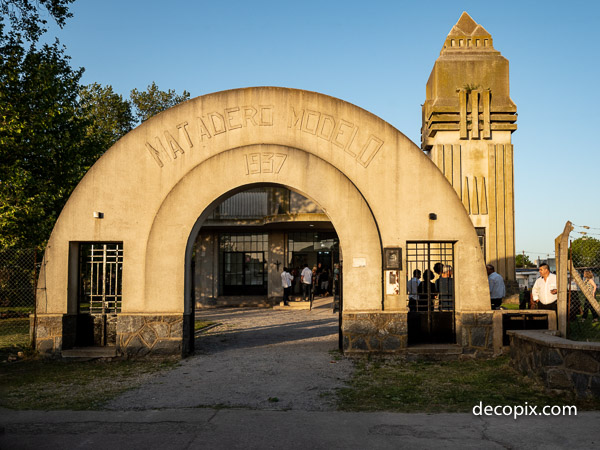
Matadero, Balcarce, Argentina
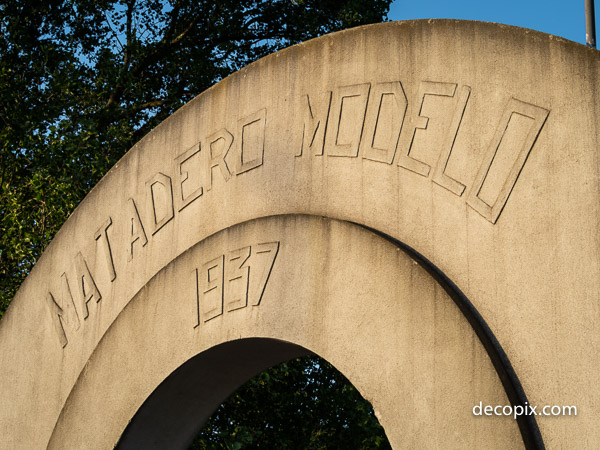
Matadero, Balcarce, Argentina
We spent the night in Azul. Opposite our hotel, the town square had a Salamone fountain. This was our introduction to Salamone’s zigzag pavement design, which creates a peculiar optical illusion if you stare at it.
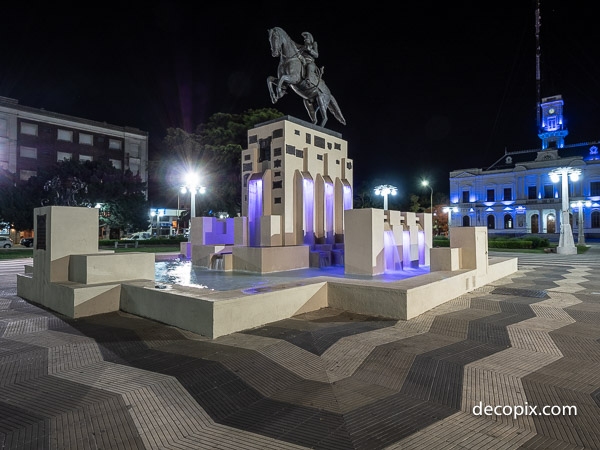
Fountain by Francisco Salamone, Azul, Argentina. (Yes, the colors change.)
Day three began with Salamone’s cemetery in Saldungaray. It is said that Jesus has three different expressions, depending on which way you are facing.
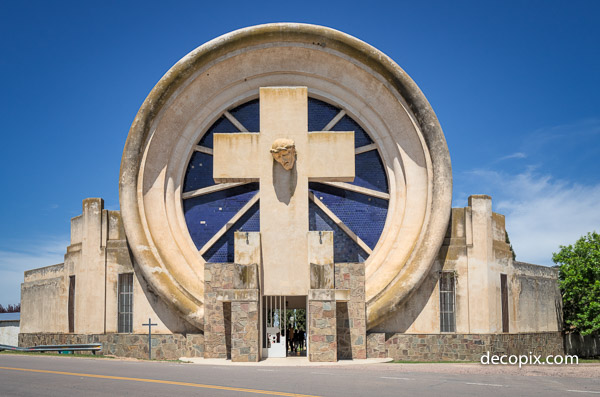
Cemetery, Saldungary, Argentina
Salamone also designed a small market in Saldungary.
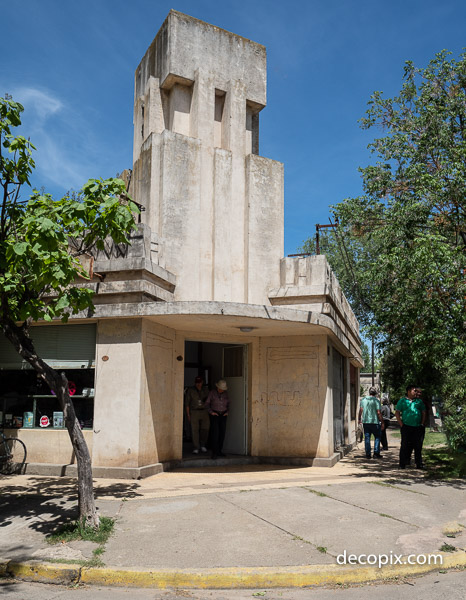
Saldungary Municipal Market
And the City Hall.
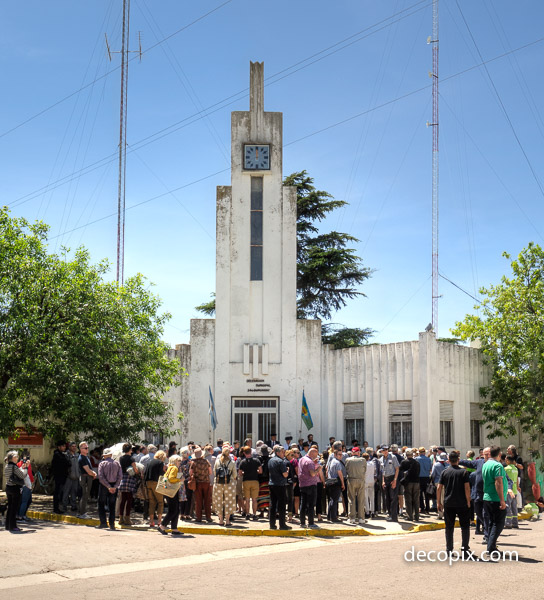
City Hall, Saldungary, Argentina
Back on the bus.
For the town of Coronel Pringles, Salamone designed an entire complex including City Hall, a park, a square, fountains, landscaping…the works. He designed the furniture and lighting in the City Hall as well.
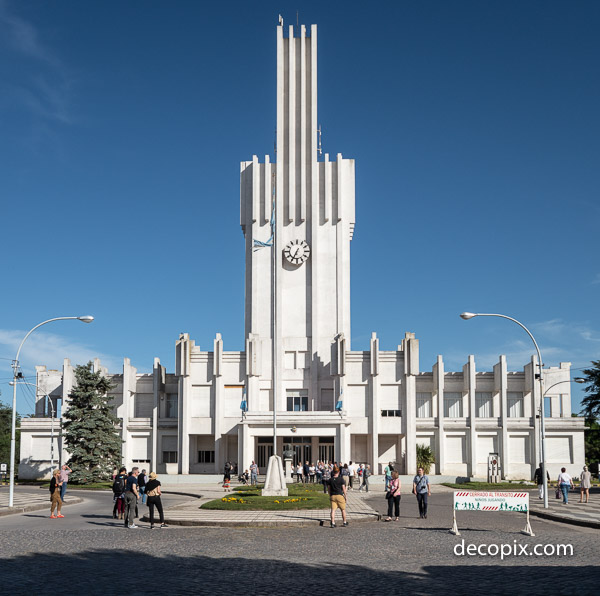
City Hall, Coronel Pringles, Argentina
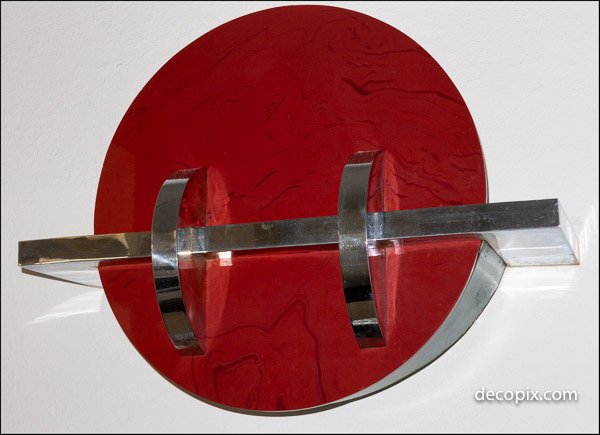
Light fixture by Franciso Salamone. City Hall, Saldungary, Argentina
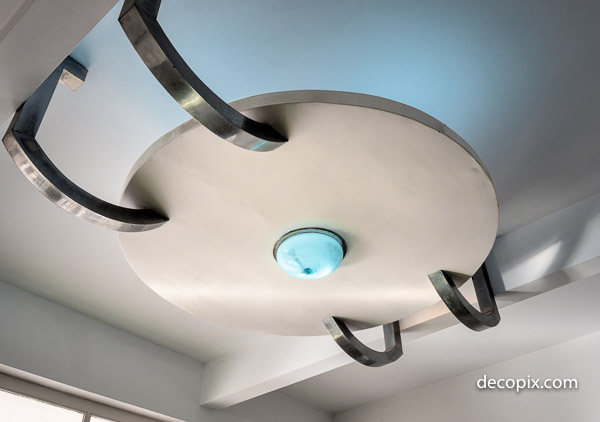
Another fixture by Salamone. City Hall, Saldungary, Argentina
Did I forget the matadero? Somehow, Salamone found time to build a slaughterhouse outside town.
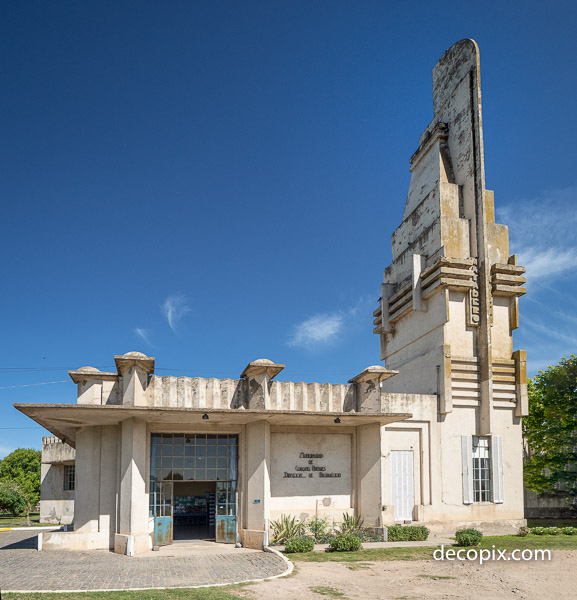
Matadero, Coronel Pringles, Argentina
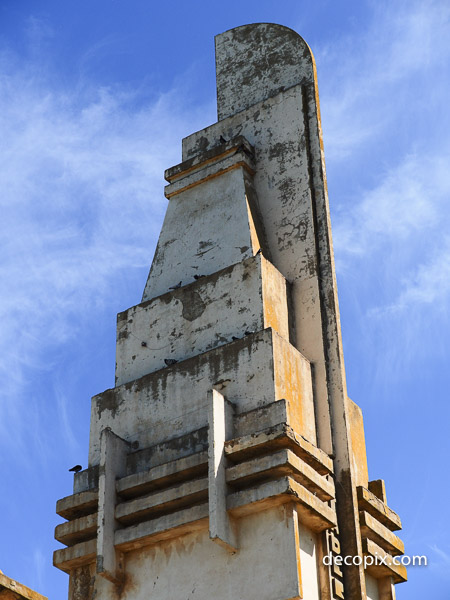
I thought this was Buck Rogers-type streamlining, but it’s actually a stylized knife blade!
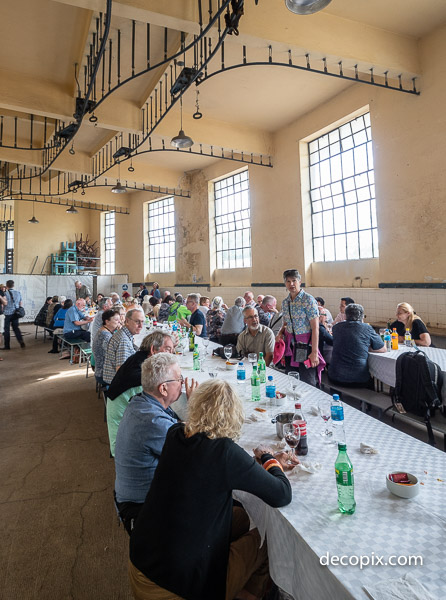
Getting ready to chow down at the matadero. Note the rails for the meat hooks on the ceiling. They are still used–but for storing worker’s bicycles.
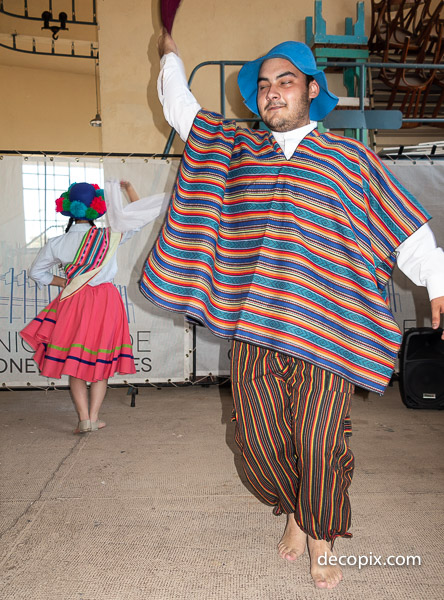
A traditional dance performance
Back on the bus, to Rauch.
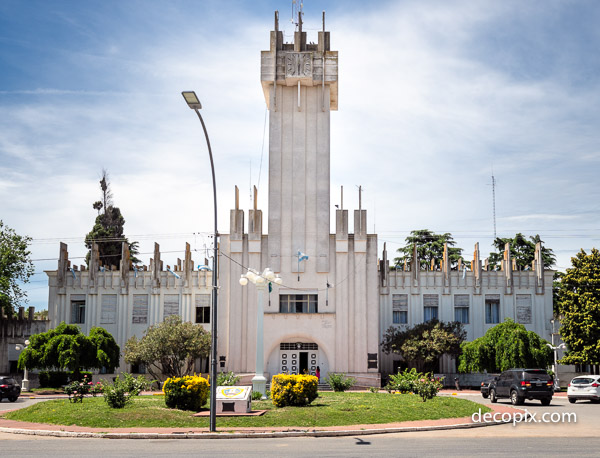
City Hall, Rauch, Argentina
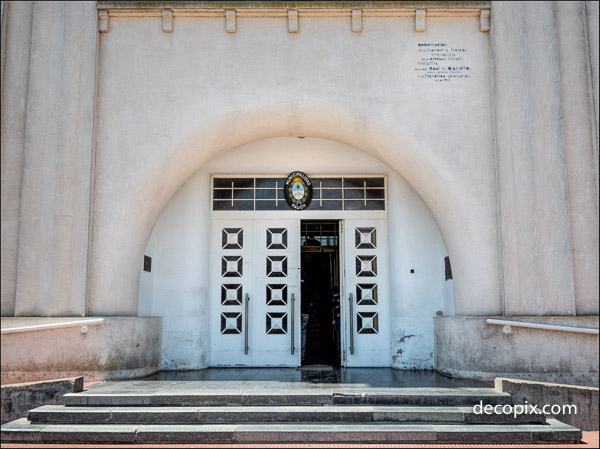
Entrance, Rauch City Hall, signed by the artists at top right.
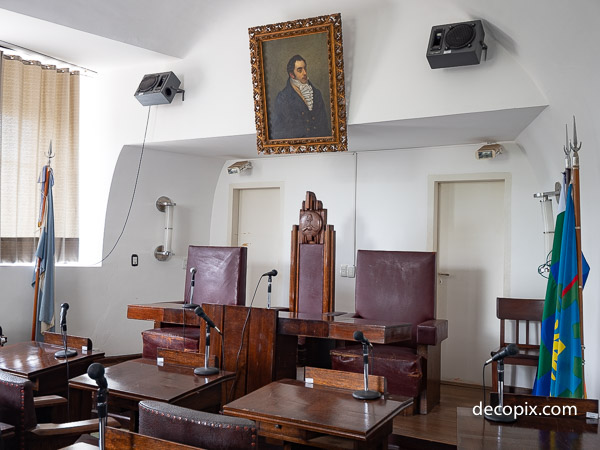
Government meeting room, Rauch City Hall
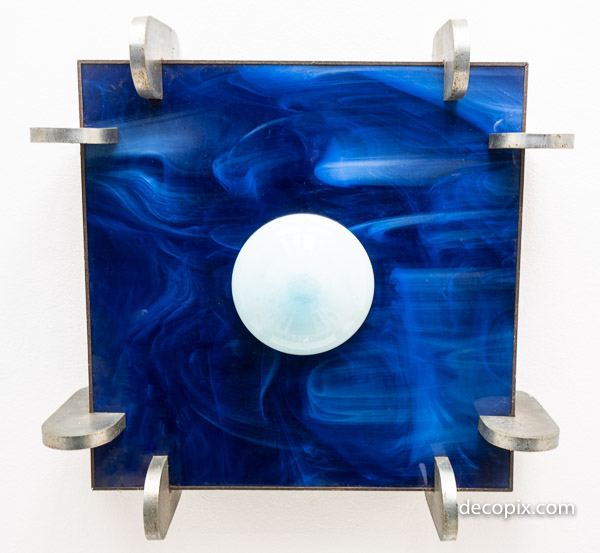
Ceiling light, Rauch City Hall. This appeared to be Vitrolite glass in Royal Blue Agate, a rare color, even in the USA.
Next stop, Laprida, where e received a hero’s welcome in Laprida, which was very much appreciated, but it pushed our schedule further behind.
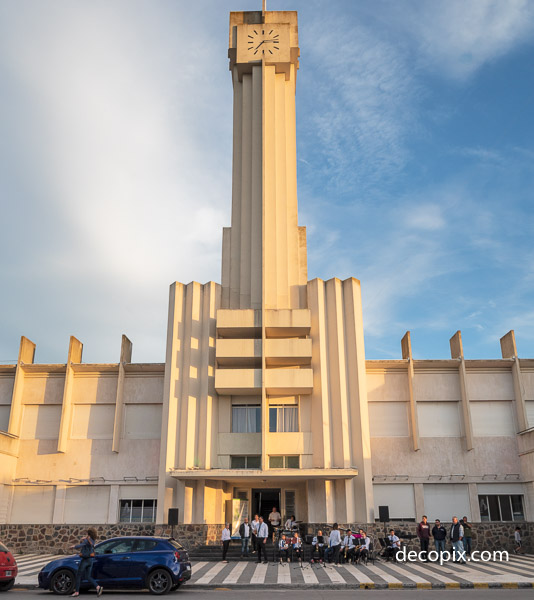
Almost sundown, but the band is waiting to perform. City Hall, Laprida, Argentina
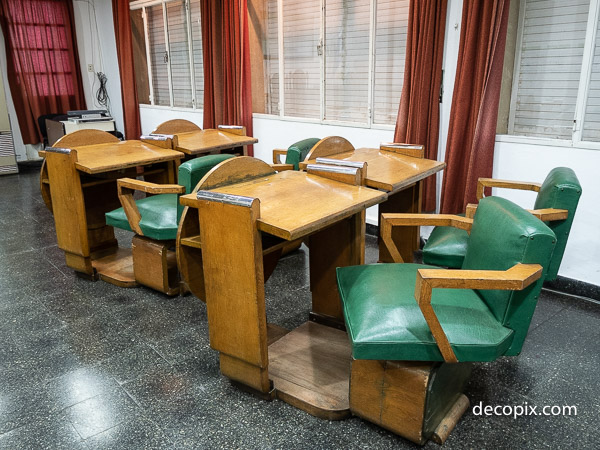
Salamone-designed furniture in the City Hall
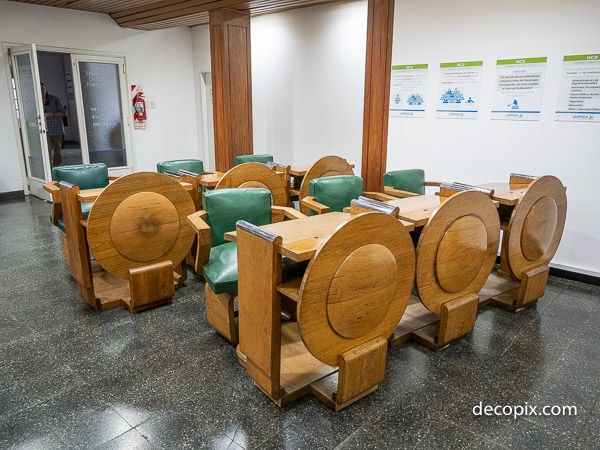
I’m not sure if the discs had a purpose, but he sure liked them.
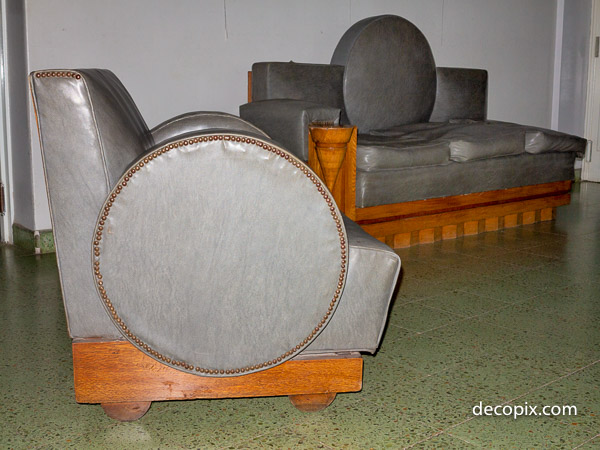
…and more discs
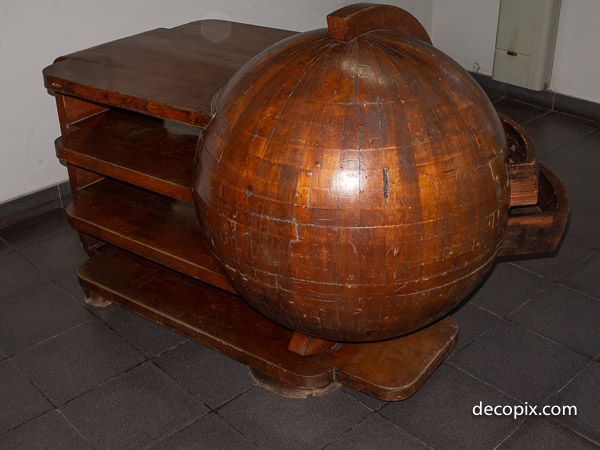
My favorite; a globe desk. The globe has drawers.
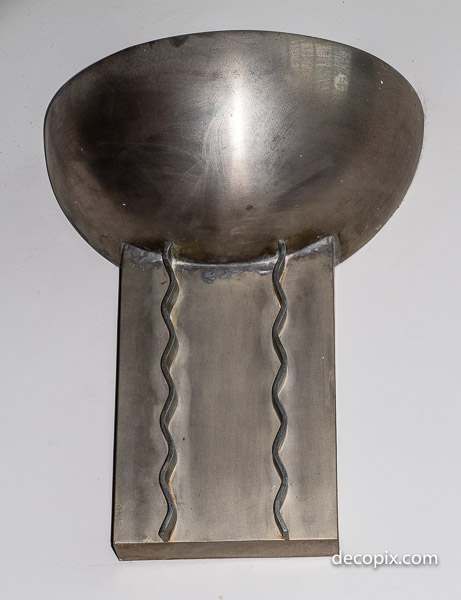
Sconce, Laprida City Hall
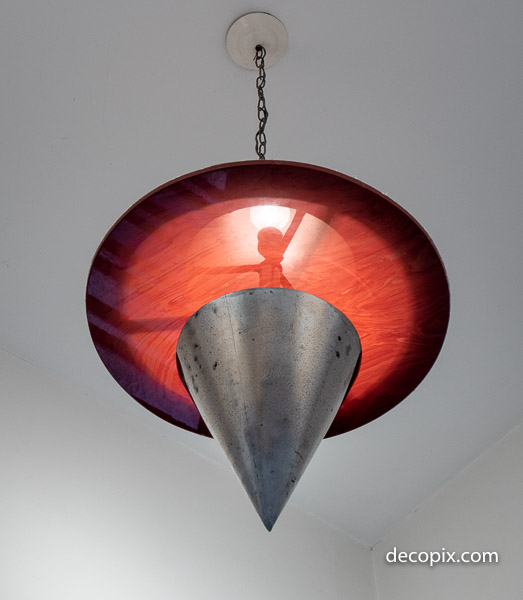
A light fixture or a witch’s hat
We finished the day at the Laprida cemetery. November is spring in Argentina, but the sun went down quickly, and the photos here were illuminated by bus headlights. An odd scene, but tailor made for the Secret Society of Salamoniacs.
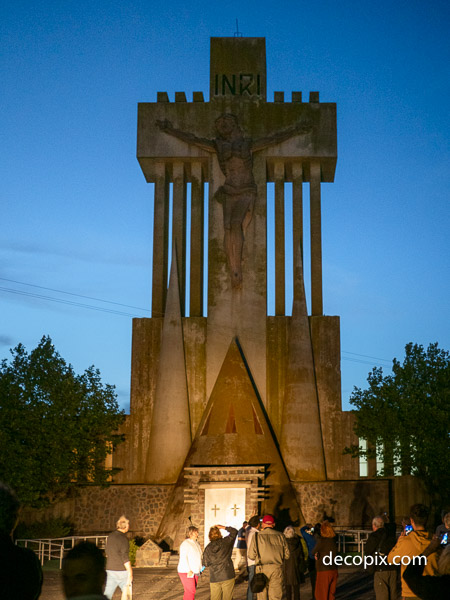
An after dark gathering of Salamoniacs.
By the light of the moon, this scene was like standing in a life-size version of a Hugh Ferriss zoning envelope drawing.
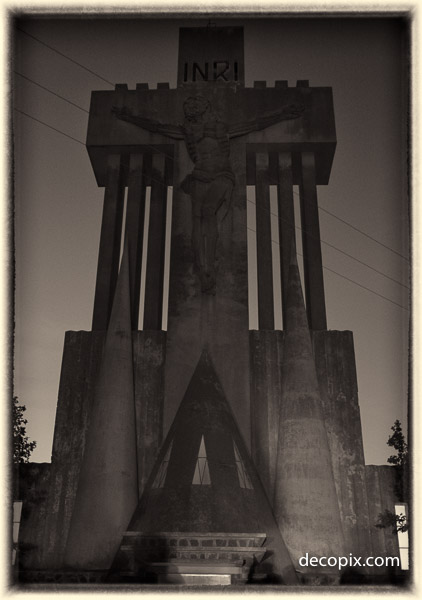
Cemetery, Laprida, Argentina
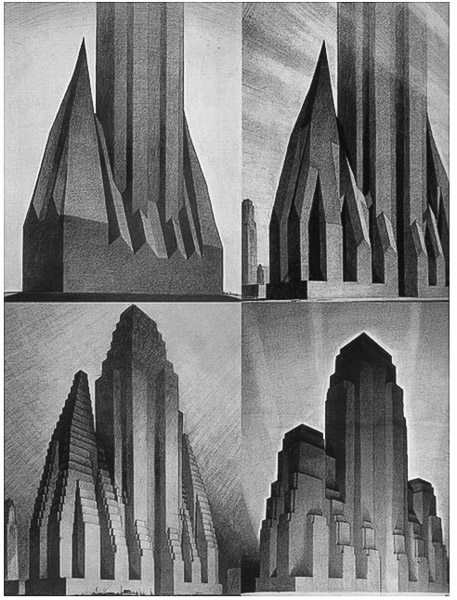
Zoning envelope study by Hugh Ferriss
Our final day began with a visit to, arguably, Salamone’s finest cemetery portal, in Azul.
I wondered–and still do–why Salamone felt compelled to spell things out. The extremely large RIP on Azul’s cemetery puts to rest any questions about the purpose of the place but ironically, the scale of these letters was such that I didn’t notice them at first.
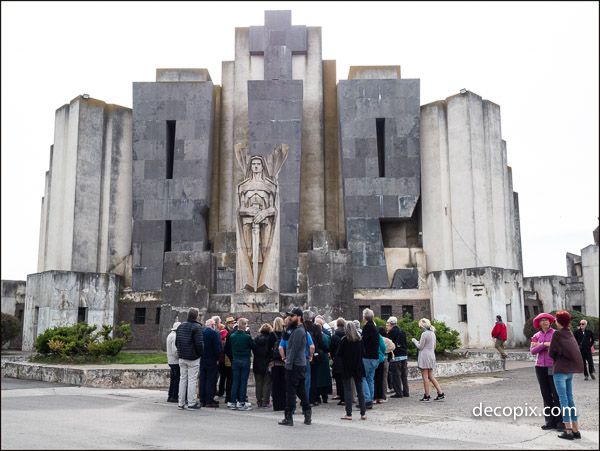
Cemetery, Azul, Buenos Aires
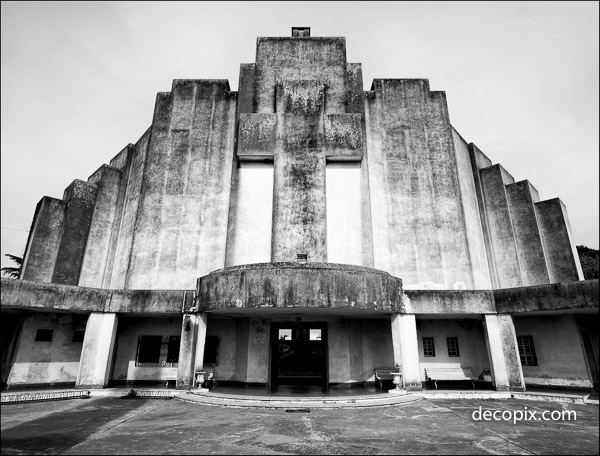
Azul cemetery entrance, seen from the rear
One last stop, at Azul’s matadero, before we rerturned to Buenos Aires.
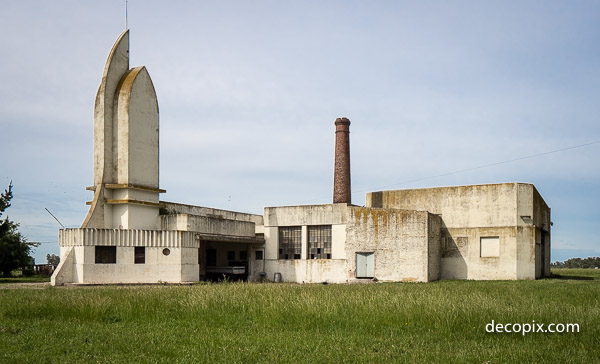
Abandoned matadero, Azul, Argentina
Had enough Salamone? Not I.
I returned to Buenos Aires with our group (the Salamoniacs.) But it wasn’t long before I set out on my own to see Salamone’s work at Gaumini, Carhue and the lost city of Epecuen. An eventful journey lies ahead, in Part 2.
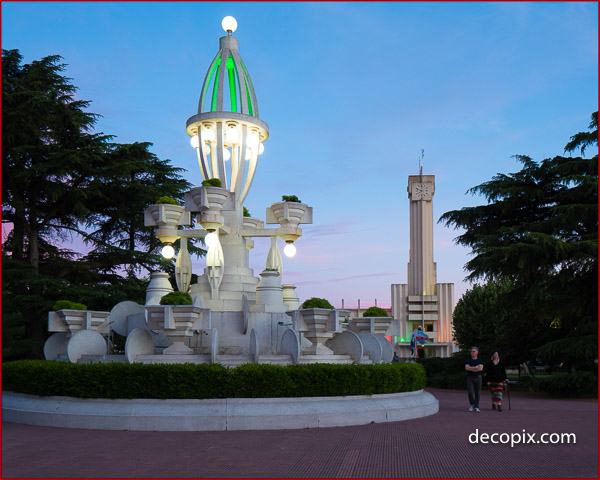
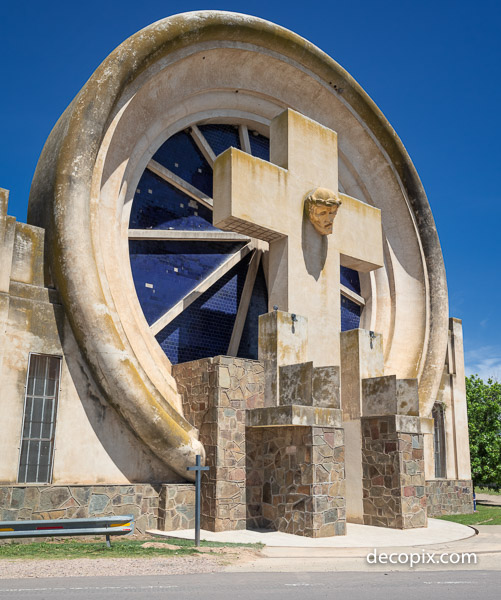
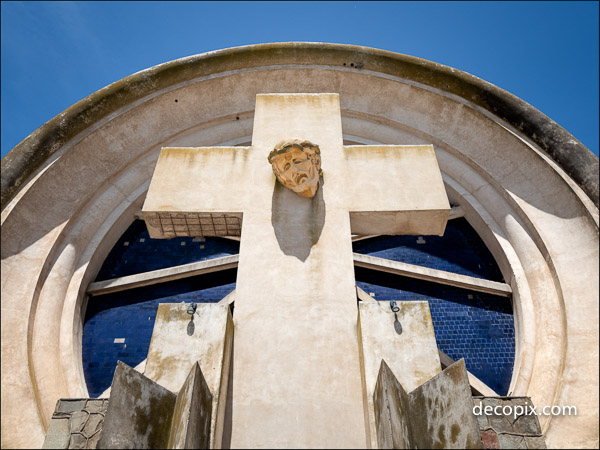
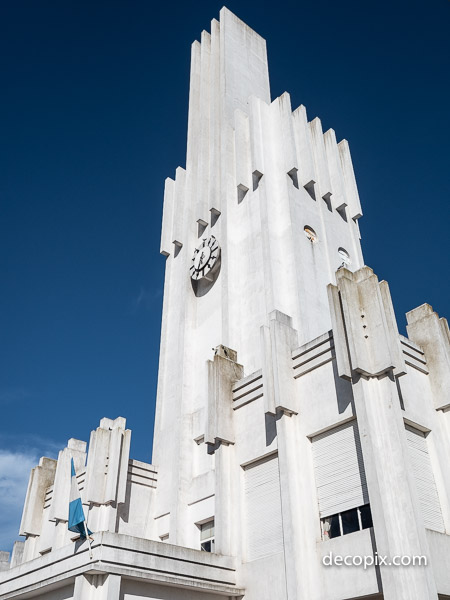
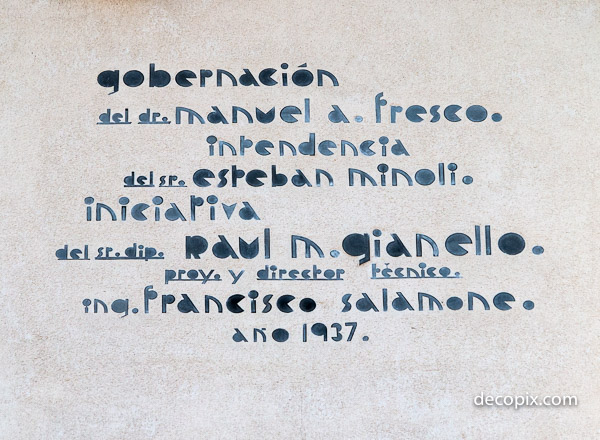
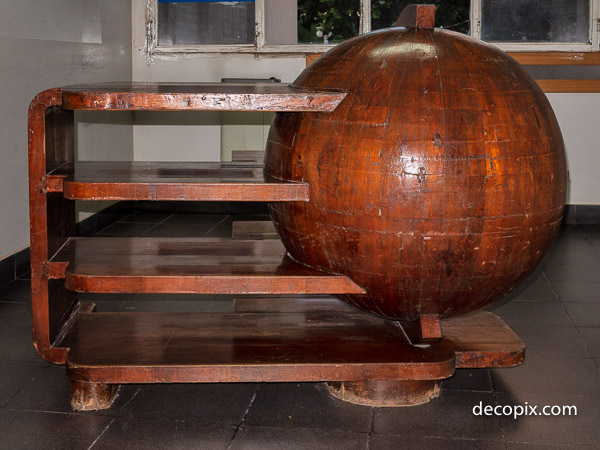
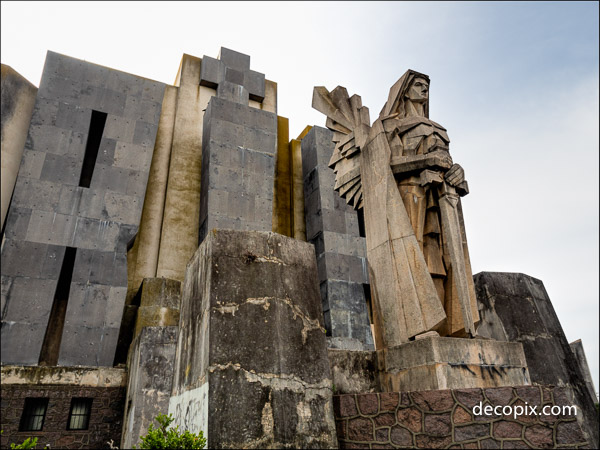
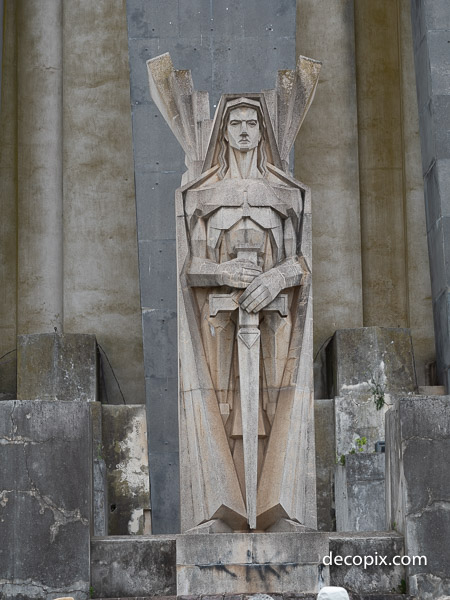
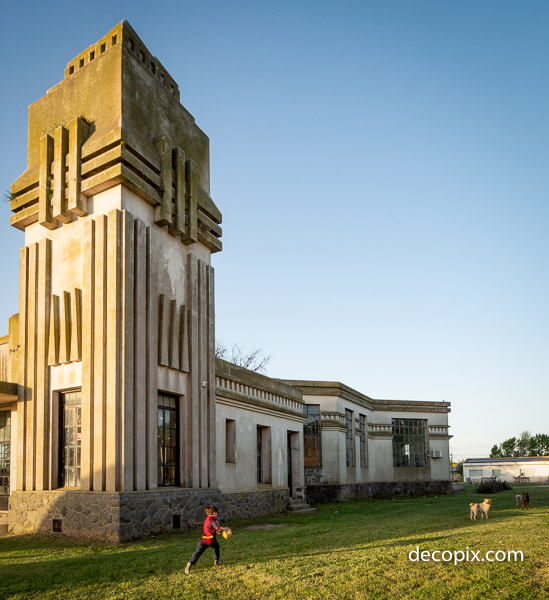
Another wonderful post from you, Randy. These were outstanding. I had never heard of Salamone, so this was a special treat. Our dear friend Bob Barrett would have loved these photos and sharing in your journey. Thanks again for sharing. Bruce
Thanks, Bruce. I agree; Bob would have enjoyed seeing Salamone’s work. By the way, I have another post planned with more Salamone buildings, although I didn’t come close to seeing everything. I saw perhaps 10%.
Wonderful photos as always and so interesting. Thank you Randy. Connie
Thanks Connie. Glad you liked them.
Such an interesting article. It´s really nice to read your first impressions visiting those works and remembering what I first felt when I was knew them. I´ve been visiting Salamone´s works since 2007 and those towns are still one of my favorite destinations for holidays. I hope you´ll be able to come back to Buenos Aires. There are many villages and towns with monumental architecture in the middle of Pampas.
Regards from Buenos Aires!
Thanks for the message, Martin. I’d love to see more and I’m sure I barely scratched the surface. Fortunately, there are sone good sites with information on Salamone. He even has his own Wikipedia page.
Thanks so much, Randy for this incredible treasure trove of Art Deco. Love, love, love it.
I was in Argentina 15 yrs. ago and did not know about it then yet this opens a whole
new world when I go again.
Again, thanks for these pics and this wonderful site !!
Hi Lauren – Thanks so much for taking the time to comment. I’m glad you find Decopix enjoyable. I took over 4000 photos on my Argentina trip, so I have a lot more to go through and post. Stay tuned.
Hello Randy, I just discovered the treasure trove Decopix is and am far beyond merely impressed. I also enjoyed your writing and appreciated that you characterized the difference between Art Deco and streamline modern so well – better in fact than in many Art Deco books. I am passionate about art deco and the period as a whole, collect deco, and have walked cities over the world or driven near and far to admire a deco building. I am particularly taken with architectural friezes. Having said all this, I have not had the fortune or perhaps the fortitude to seek deco out nearly to the extent that you ( and apparently your friends and fellow members have). Bravo to you for documenting in photo and articulating so well the grandeur of this style. The post on Argentina was particularly interesting because his actual designs almost seem like sketching that I have seen ( and even done myself) that were mere fantasy’s never built ( such as a book I have on Joseph Urban). It is almost as if some deco ideal that never could actually exist and was left to the imagination came to realization in the Argentine countryside of all places! So, thank you for this and everything else you do to highlight all of the elegance and style of the period. I’ve collected every book, seen as much deco as I could in person and spoken to anyone who had knowledge in this field but your sight is the last word on deco and therefore the last word on style in my book. Thank you! Mark
Hi Mark, Thank you so much for you comment and my apoligies for not getting back to you sooner. I had planned to finish my post on Montivideo and call your attention to that one as well, but it seemed I never got it done. Well, finally, it’s done. All the best, Randy